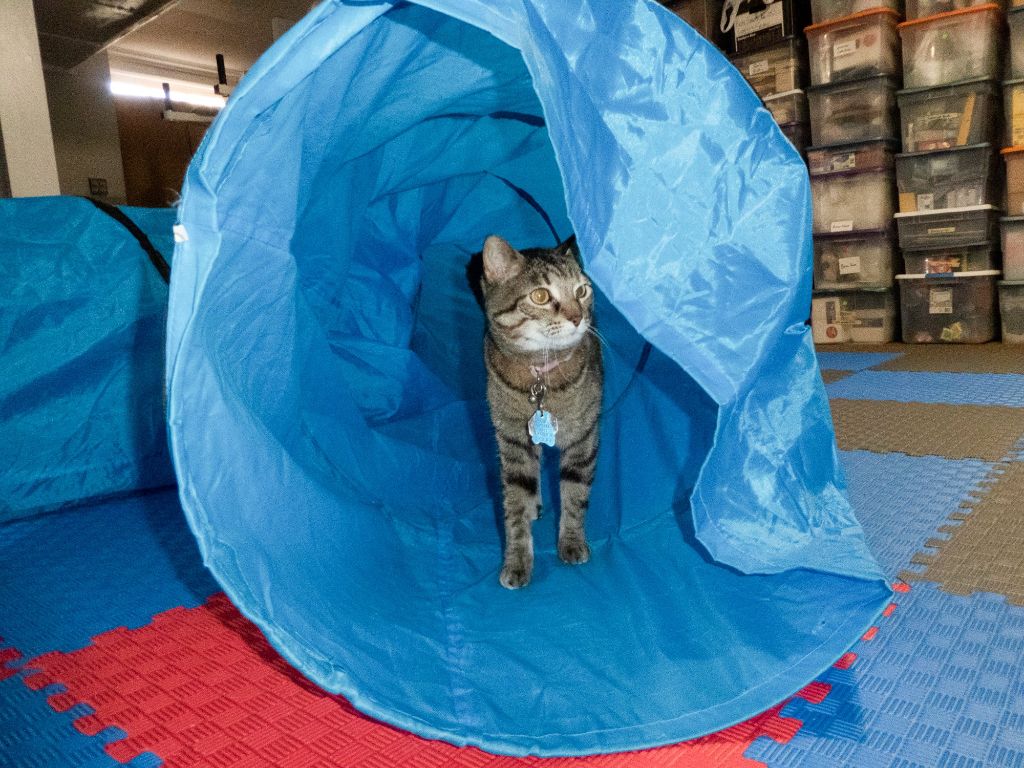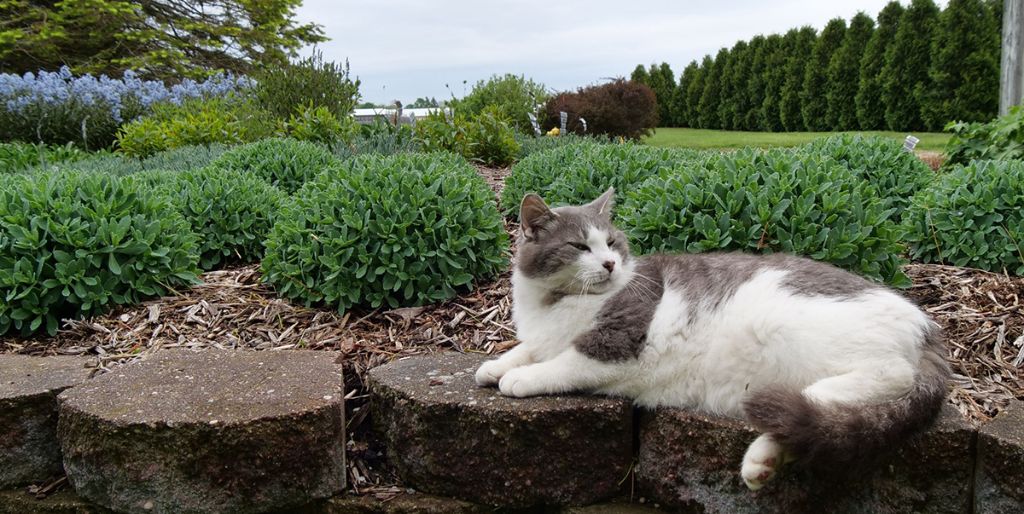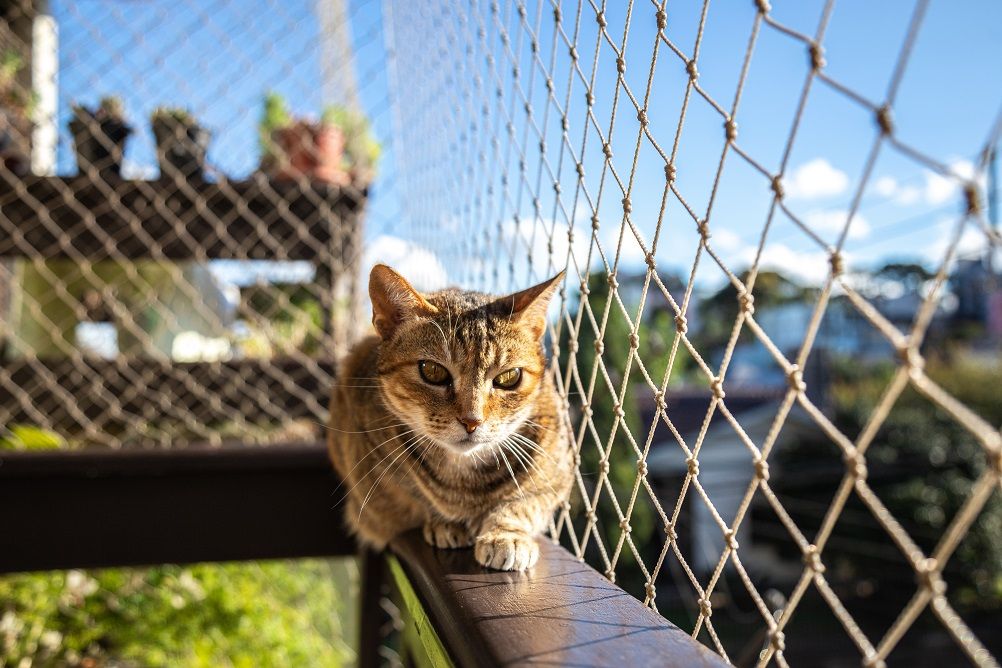Assess Your Current Fence
The first step in cat-proofing your fence is to thoroughly examine your existing fence and take notes. Pay attention to the type of fence, such as wood, chain link, vinyl, or metal. Note the height of the fence, as cats can typically jump up to 6 feet high. Check for any damage, openings, or weaknesses that could allow a cat to escape. Also inspect how the fence is installed into the ground – a cat may be able to dig under poorly installed fencing. Taking the time to carefully assess your current fence will help you identify any vulnerabilities that your cat could be exploiting to get out.
“The average height of residential fences should not exceed 6 inches. Our team suggests you check with the local building code department to ensure that your fence meets any regulations.” (Fence Company Lincoln Ne)
Determine How Your Cat Escapes
The first step to cat-proofing your fence is to figure out how your cat is getting out in the first place. Cats are agile and clever creatures, so they may discover ways to climb over or squeeze through your fence that you wouldn’t expect.

Spend time observing your cat’s behavior in the yard to determine its escape route. When does it tend to sneak out – at night, when you let it outside, or at other random times? Does it climb to the top of your fence and jump over, or does it find gaps or holes to crawl through? Identifying the weak spots in your fence line will allow you to reinforce them properly.
You may need to monitor your cat over the course of several days to figure out its methods. If you have a camera, setting it up to record when you’re away can help you gather useful information.
Pay attention to areas where branches or other objects rest against the fence, as cats can use those to boost themselves up and over. Also look for loose boards, gaps where fence posts meet, or digging spots under the fence where your cat may be squeezing through.
Once you know how your sneaky feline is getting free, you’ll know exactly how to cat-proof your fence to keep your pet safely contained.
Choose a Cat-Proof Fencing Material
There are several common fencing materials to consider when planning to make your existing fence cat-proof: wood, vinyl, and chain link. Assessing which one you already have and the best options for modifying it will be key.
Wooden fences are commonly vulnerable to being climbed by cats due to the horizontal slats. However, they can be modified by adding extensions, roller tops, or other deterrents. Vinyl fences are smoother and more difficult to climb directly, but clever cats can still find footholds. Adding curve extenders along the top or applying climbing deterrents are good options. Chain link fences can be challenging with built-in footholds, but adding angled tops, mesh netting, or wire extensions can help deter climbing.
When comparing fencing materials, wood and vinyl both allow for attachments like roller bars or wire toppers. Chain link is more rigid but extra netting or extensions can achieve the same goal. Choose the most cat-proof option that works with your existing fence type and complements your yard aesthetics.

Add Height Extensions
One of the most effective ways to cat-proof a fence is to add clip-on extensions that increase the overall height. Most cats can jump around 6 times their height, so you’ll want to extend your fence to at least 6 feet tall if possible. Metal or plastic clip-on extensions can be purchased at many hardware stores or online retailers and easily mounted along the top of your existing fence.
Look for sturdy extensions that mount securely onto your fence posts and won’t easily come loose. Measure the height of your current fence posts to determine how much additional height is needed. The extensions often come in increments like 12, 18, or 24 inches. Install them using the provided hardware and make sure they are firmly seated atop each post.
By boosting your fence height with simple clip-on extensions, you’ll deter even the most agile cats from being able to leap to freedom. Just be sure to check that the extensions meet any regulations for maximum fence height in your area before installing.
Sources:
https://www.purrfectfence.com/blogs/news/how-to-cat-proof-a-fence
Install Roller Tops
Roller tops are cylinders that spin when a cat tries to gain purchase on them. They are installed along the top edge of a fence to prevent cats from being able to climb over. According to Purrfect Fence, when installed properly on most fence types, commercially available cat-proof fence roller systems have around an 80-90% success rate at deterring cats.
To install roller tops, you first need to purchase roller tops designed specifically for deterring cats. Some popular commercial options are the Purrfect Fence Cat Fence Rollers and the Oscillotamer Rollers. Make sure to get roller tops rated for the height and width of your existing fence.
The roller tops attach to the top of the fence using brackets screwed into the fence. Position the brackets every 2-3 feet along the fence top and slide the roller tubes into them. The roller tubes should spin freely in the brackets. Leave a small gap between roller tubes to allow for expansion and contraction. Make sure the roller tubes overhang the fence by at least 3 inches on both sides.
Properly installed and maintained roller tops create an unstable climbing surface that cats find difficult to grip. By spinning when climbed on, the roller tops prevent cats from getting over fences 6 feet or higher. For added protection, roller tops can be combined with other deterrents like landscaping barriers or motion-activated sprinklers.
Bury Fencing
Burying a portion of the fencing underground can help prevent cats from digging underneath to escape. According to https://icatcare.org/advice/fencing-in-your-garden/, burying wire fencing as deep as possible, at least 18-24 inches, makes it difficult for cats to dig under. When burying fencing, the depth matters more than the actual fencing material. Even chicken wire or plastic garden fencing can work well when buried deep enough. Prepare the trench at least 24 inches deep, lay the fencing material inside, and backfill the hole with dirt firmly packed down to prevent the cat from tunneling.
Make sure to bury any fencing gates as well, overlapping the underground fencing on either side by about 12 inches. This prevents cats from digging out specifically at gate edges. Extend the buried fencing 6 inches or more outside the enclosed area so cats cannot start digging just beyond the fence perimeter either.
Use Landscaping Barriers
Landscaping around your fence line can create natural barriers that deter cats from approaching the fence. Thorny plants placed around the perimeter are uncomfortable for cats to step on or brush up against. Some great thorny plant options include roses, pyracantha, holly, barberry, and junipers.

For a more impenetrable barrier, use gravel or stone pavers along the base of the fence. Cats dislike walking across the unstable and sharp terrain. Lay down landscape fabric first, then apply a 2-3 inch layer of gravel. You can also install a paver border along the fence line. Just be sure to leave enough space between the pavers and fence for cats to not be able to squeeze through https://horticulture.co.uk/cat-deterrent-plants/.
These prickly plants and sharp, uncomfortable materials create a strip of land that cats will avoid. By keeping cats away from the fence perimeter itself, you reduce the opportunity for them to climb, jump, or squeeze through any vulnerabilities in the fence.
Try Motion-Activated Deterrents
Motion-activated deterrents can be highly effective at keeping cats away from your yard and fence. These devices detect when a cat enters the monitored area and respond with startling noises, water spray, or other deterrents. According to catrepellentguide.com, ultrasonic cat deterrents with motion sensors can reduce unwanted cat visits by up to 80%.
Popular motion-activated deterrents include sprinklers, compressed air sprayers, and ultrasonic noise makers. The sudden noise or spray of water startles cats without harming them. Place these devices along fence lines, garden borders, and other areas cats may intrude. Look for products with adjustable range and sensitivity to target only unwanted cats.
For noise deterrents, some people have success with rattling tin cans filled with pennies, bells, or other noisemakers that activate when triggered. Homemade “scarecrows” with dangling cans or other noisemakers can also deter cats when movement disturbs the materials. Just be sure any homemade deterrents are safely constructed.
Use multiple motion-activated devices around the perimeter for best results. Consistency is key, so check and maintain deterrents regularly to keep them fully functional. Motion-activated devices offer an effective cat-proofing method without continuously disturbing pets or people.
Apply Anti-Climb Paint or Tape
Applying anti-climb paint or tape is another effective way to deter cats from climbing fences. These products have rough, abrasive textures that cats find unpleasant on their paws. According to Purrfect Fence, anti-climb paints contain fine grit or sand to create a coarse surface, while tapes have small spikes or raised patterns.
When a cat’s paws touch these abrasive surfaces, they will not want to grip or walk on the fence. This causes most cats to avoid climbing treated fences altogether. There are several commercial anti-climb paints and tapes designed specifically for deterring cats that can be applied to wood, metal, brick, and other fencing materials.
It’s important to regularly check and reapply these products as needed, since they can wear off over time. Anti-climb deterrents will need to cover the entire fence or wall to be fully effective. With regular upkeep, anti-climb paints and tapes provide a simple and affordable way to keep cats from scaling most standard fences.
Monitor and Make Adjustments
After installing your cat-proof fencing solutions, it’s important to monitor your cat’s behavior and make any necessary adjustments (source). Check the perimeter of your fence regularly to identify any weak spots or problem areas where your cat is still escaping. This may involve observing your cat’s movements and escape tactics.

Pay particular attention during the initial adjustment period, which can take 2-5 days as your cat gets used to the new fencing (source). Be patient and allow time for your cat to adapt. Signs your cat is still adjusting include meowing insistently, hiding, loss of appetite, and lack of interest in toys or play.
Make note of any vulnerabilities in your fencing that allow your crafty cat to get out. You may need to add additional height extensions, roller tops, or anti-climb surfaces. Refine the fencing containment solutions until your yard is securely cat-proofed with no weak points remaining.
With continued monitoring and incremental adjustments, you can successfully contain even the most determined escape artist cat within your yard.

